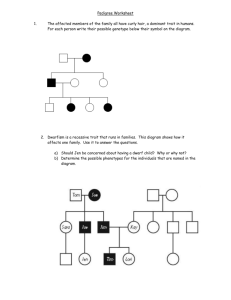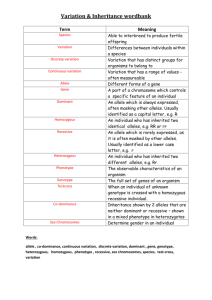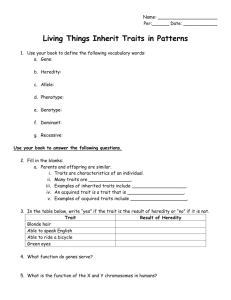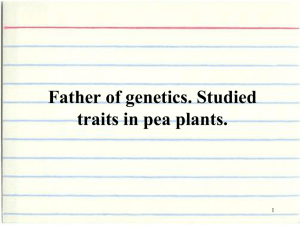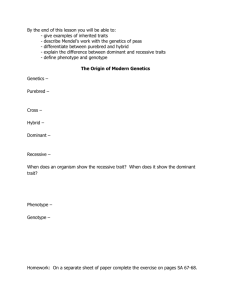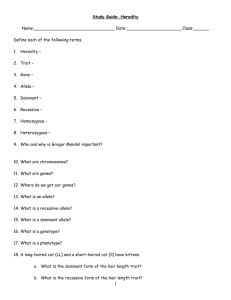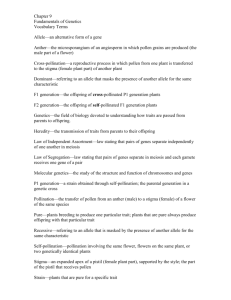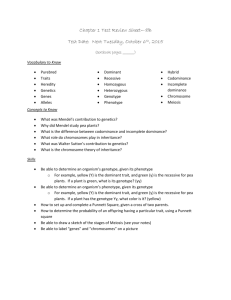Oh What a Beautiful Baby!
advertisement
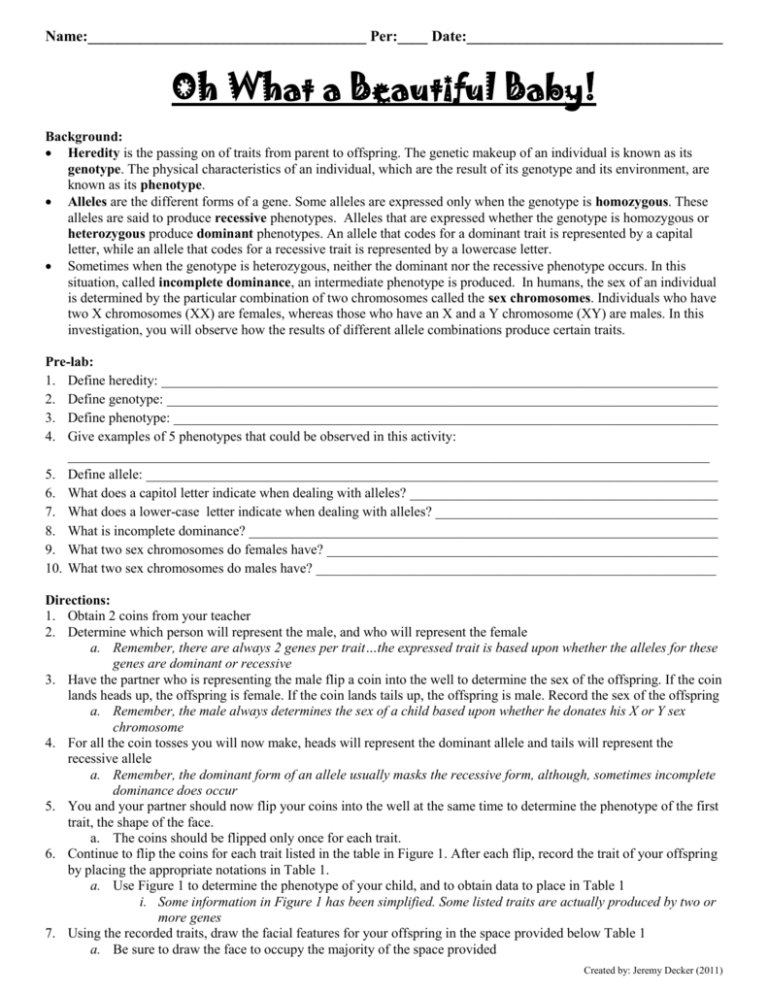
Name:_____________________________________ Per:____ Date:__________________________________ Oh What a Beautiful Baby! Background: Heredity is the passing on of traits from parent to offspring. The genetic makeup of an individual is known as its genotype. The physical characteristics of an individual, which are the result of its genotype and its environment, are known as its phenotype. Alleles are the different forms of a gene. Some alleles are expressed only when the genotype is homozygous. These alleles are said to produce recessive phenotypes. Alleles that are expressed whether the genotype is homozygous or heterozygous produce dominant phenotypes. An allele that codes for a dominant trait is represented by a capital letter, while an allele that codes for a recessive trait is represented by a lowercase letter. Sometimes when the genotype is heterozygous, neither the dominant nor the recessive phenotype occurs. In this situation, called incomplete dominance, an intermediate phenotype is produced. In humans, the sex of an individual is determined by the particular combination of two chromosomes called the sex chromosomes. Individuals who have two X chromosomes (XX) are females, whereas those who have an X and a Y chromosome (XY) are males. In this investigation, you will observe how the results of different allele combinations produce certain traits. Pre-lab: 1. Define heredity: _________________________________________________________________________________ 2. Define genotype: ________________________________________________________________________________ 3. Define phenotype: _______________________________________________________________________________ 4. Give examples of 5 phenotypes that could be observed in this activity: _____________________________________________________________________________________________ 5. Define allele: ___________________________________________________________________________________ 6. What does a capitol letter indicate when dealing with alleles? _____________________________________________ 7. What does a lower-case letter indicate when dealing with alleles? _________________________________________ 8. What is incomplete dominance? ____________________________________________________________________ 9. What two sex chromosomes do females have? _________________________________________________________ 10. What two sex chromosomes do males have? __________________________________________________________ Directions: 1. Obtain 2 coins from your teacher 2. Determine which person will represent the male, and who will represent the female a. Remember, there are always 2 genes per trait…the expressed trait is based upon whether the alleles for these genes are dominant or recessive 3. Have the partner who is representing the male flip a coin into the well to determine the sex of the offspring. If the coin lands heads up, the offspring is female. If the coin lands tails up, the offspring is male. Record the sex of the offspring a. Remember, the male always determines the sex of a child based upon whether he donates his X or Y sex chromosome 4. For all the coin tosses you will now make, heads will represent the dominant allele and tails will represent the recessive allele a. Remember, the dominant form of an allele usually masks the recessive form, although, sometimes incomplete dominance does occur 5. You and your partner should now flip your coins into the well at the same time to determine the phenotype of the first trait, the shape of the face. a. The coins should be flipped only once for each trait. 6. Continue to flip the coins for each trait listed in the table in Figure 1. After each flip, record the trait of your offspring by placing the appropriate notations in Table 1. a. Use Figure 1 to determine the phenotype of your child, and to obtain data to place in Table 1 i. Some information in Figure 1 has been simplified. Some listed traits are actually produced by two or more genes 7. Using the recorded traits, draw the facial features for your offspring in the space provided below Table 1 a. Be sure to draw the face to occupy the majority of the space provided Created by: Jeremy Decker (2011) Table 1: Traits Dominant, Recessive, Incomplete (Which trait does your baby have?) Genotype of Your Baby Phenotype of Your Baby Shape of face Cleft in chin Texture of hair Widow’s peak Spacing of eyes Shape of eyes Position of eyes Size of eyes Length of eyelashes Shape of eyebrows Position of eyebrows Size of nose Shape of lips Size of ears Size of mouth Freckles Dimples Was your baby a Male or Female? _________________What is their name? ____________________________ Picture: Questions: 1. What did each of the coins represent? 2. Does the male or female determine the sex of their offspring? 3. Give three genetic traits in this activity that show incomplete dominance: A. B. C. 4. For which trait(s) did your child exhibit the intermediate phenotype? 5. Can you always determine an organism’s genotype by observing its phenotype? Explain why or why not: Created by: Jeremy Decker (2011) Created by: Jeremy Decker (2011) Created by: Jeremy Decker (2011) Created by: Jeremy Decker (2011)

